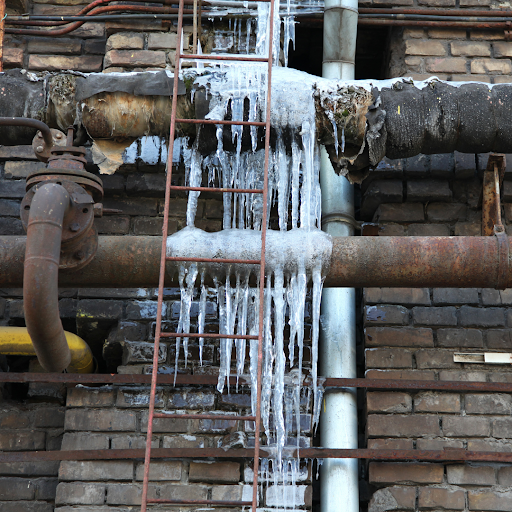Advice for Preventing Frozen Pipes in Cold Weather: Specialist Advice
Advice for Preventing Frozen Pipes in Cold Weather: Specialist Advice
Blog Article
This post below relating to Prevent Frozen Pipes is indeed captivating. Read on and draw your own personal assumptions.

Cold weather can damage your plumbing, especially by freezing pipes. Here's how to prevent it from happening and what to do if it does.
Intro
As temperature levels decrease, the danger of frozen pipelines rises, possibly resulting in costly fixings and water damages. Comprehending how to stop frozen pipelines is crucial for property owners in cold climates.
Understanding Icy Pipes
What causes pipes to ice up?
Pipelines ice up when revealed to temperatures listed below 32 ° F (0 ° C) for expanded durations. As water inside the pipelines freezes, it expands, putting pressure on the pipeline wall surfaces and possibly causing them to burst.
Dangers and damages
Icy pipes can result in water system disruptions, residential property damages, and costly fixings. Burst pipes can flooding homes and trigger substantial structural damages.
Indications of Frozen Piping
Identifying icy pipelines early can stop them from bursting.
How to identify icy pipelines
Seek lowered water circulation from taps, unusual smells or sounds from pipelines, and visible frost on exposed pipelines.
Avoidance Tips
Protecting susceptible pipelines
Cover pipes in insulation sleeves or make use of warm tape to safeguard them from freezing temperature levels. Focus on pipelines in unheated or outside locations of the home.
Home heating strategies
Maintain indoor rooms sufficiently heated up, particularly areas with plumbing. Open closet doors to enable cozy air to distribute around pipelines under sinks.
Shielding Exterior Plumbing
Garden hoses and outside taps
Separate and drain pipes garden pipes before winter months. Install frost-proof faucets or cover outside faucets with protected caps.
What to Do If Your Pipelines Freeze
Immediate actions to take
If you believe icy pipelines, keep taps available to ease stress as the ice melts. Make use of a hairdryer or towels soaked in warm water to thaw pipes gradually.
Long-Term Solutions
Structural changes
Consider rerouting pipelines far from exterior wall surfaces or unheated locations. Add additional insulation to attic rooms, basements, and crawl spaces.
Upgrading insulation
Buy top quality insulation for pipelines, attic rooms, and wall surfaces. Proper insulation assists preserve regular temperatures and decreases the danger of icy pipelines.
Verdict
Preventing frozen pipes requires proactive steps and quick reactions. By comprehending the causes, signs, and preventive measures, property owners can safeguard their pipes during winter.
5 Ways to Prevent Frozen Pipes
Drain Outdoor Faucets and Disconnect Hoses
First, close the shut-off valve that controls the flow of water in the pipe to your outdoor faucet. Then, head outside to disconnect and drain your hose and open the outdoor faucet to allow the water to completely drain out of the line. Turn off the faucet when done. Finally, head back to the shut-off valve and drain the remaining water inside the pipe into a bucket or container. Additionally, if you have a home irrigation system, you should consider hiring an expert to clear the system of water each year.
Insulate Pipes
One of the best and most cost-effective methods for preventing frozen water pipes is to wrap your pipes with insulation. This is especially important for areas in your home that aren’t exposed to heat, such as an attic. We suggest using foam sleeves, which can typically be found at your local hardware store.
Keep Heat Running at 65
Your pipes are located inside your walls, and the temperature there is much colder than the rest of the house. To prevent your pipes from freezing, The Insurance Information Institute suggests that you keep your home heated to at least 65 degrees, even when traveling. You may want to invest in smart devices that can keep an eye on the temperature in your home while you’re away.
Leave Water Dripping
Moving water — even a small trickle — can prevent ice from forming inside your pipes. When freezing temps are imminent, start a drip of water from all faucets that serve exposed pipes. Leaving a few faucets running will also help relieve pressure inside the pipes and help prevent a rupture if the water inside freezes.
Open Cupboard Doors
Warm your kitchen and bathroom pipes by opening cupboards and vanities. You should also leave your interior doors ajar to help warm air circulate evenly throughout your home.

We are very excited about How To Avoid Freezing Pipes and I'm hoping you appreciated our post. Those who enjoyed our blog posting plz be sure to share it. I recognize the value of your readership.
Call Today Report this page